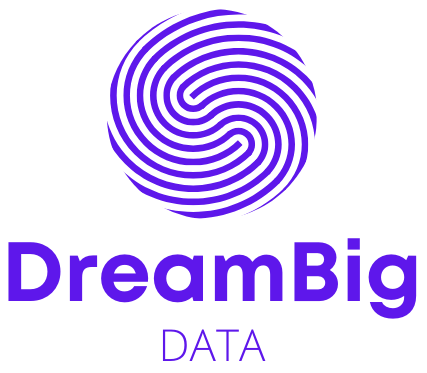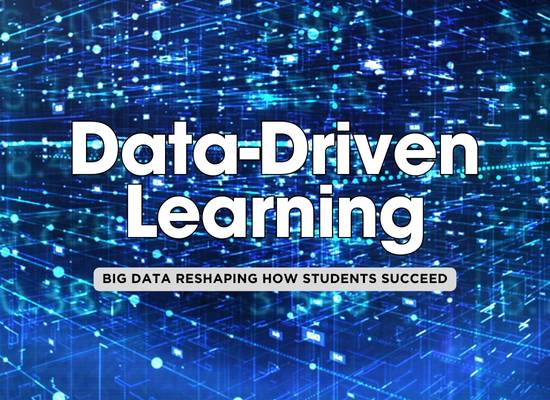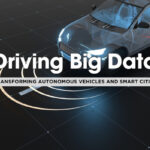The traditional classroom model is evolving, driven by the need for more tailored approaches to education. Big data is at the heart of this transformation, enabling schools and educators to analyze vast amounts of information about how students learn. This data helps identify unique learning patterns, address individual challenges, and enhance overall educational outcomes. By leveraging big data, education can shift from a standardized system to one that empowers each student to excel at their own pace.
Understanding Student Learning Patterns 📊
Big data provides unparalleled insights into how students learn, identifying trends and patterns that were previously invisible. By collecting and analyzing data from diverse sources, educators can gain a comprehensive understanding of each student’s strengths, weaknesses, and preferences.
1. Data Collection: Building a Comprehensive Profile 🗂️
The foundation of personalized learning lies in gathering data from various touchpoints:
- Learning Management Systems (LMS): Systems like Moodle, Blackboard, and Canvas track attendance, assignment completion rates, and quiz scores, providing a clear picture of academic performance.
- Classroom Technologies: Tools like smartboards, clickers, and interactive learning apps record real-time participation and engagement levels during lessons.
- Wearable Devices: Smartwatches and fitness trackers monitor external factors like physical activity, focus, and stress levels, showing how these impact learning outcomes.
- Online Behavior: Data from digital platforms like Khan Academy or Duolingo reveal how students interact with content, such as time spent on lessons and error patterns.
This comprehensive approach ensures that educators have a multidimensional view of each learner.
2. Key Insights Unlocked by Big Data 🔑
- Learning Preferences:
Big data can identify whether students learn best through visual aids, hands-on activities, or auditory content. This allows educators to design lessons that cater to diverse learning styles. - Knowledge Gaps:
By analyzing test scores, homework completion, and quiz results, big data pinpoints specific areas where students struggle. For example, if a student consistently underperforms in algebra but excels in geometry, targeted interventions can be introduced for algebraic concepts. - Engagement Patterns:
Behavioral data reveals when and how students are most engaged. For instance, tracking interaction with gamified learning modules can show whether playful competition motivates students. - External Influences:
Data from wearable devices or student surveys can highlight how factors like sleep, nutrition, and stress impact focus and academic performance, enabling holistic support.
3. Real-Life Example: Transforming Reading Outcomes 📖
In 2022, a pilot program in a U.S. school district used big data analytics to improve reading comprehension. The district collected data from:
- LMS platforms tracking students’ quiz performance.
- Eye-tracking software measuring reading fluency.
- Surveys gauging students’ confidence in understanding complex texts.
The analysis revealed a widespread issue with vocabulary comprehension, particularly among 7th-grade students. Armed with this insight, teachers implemented targeted vocabulary-building exercises using gamified learning apps. Within one semester, students’ reading comprehension scores improved by an average of 20%.
4. Benefits for Educators and Students 🎓
- For Educators:
- Streamlined lesson planning with data-driven insights.
- Early identification of at-risk students.
- Greater ability to tailor teaching strategies.
- For Students:
- Personalized learning paths that match their pace.
- Improved confidence as challenges are addressed proactively.
- Increased engagement with materials designed to suit their preferences.
Designing Personalized Curriculums with Big Data 🎯📚
Personalized curriculums are the next frontier in education, and big data is making them a reality. By analyzing individual learning patterns and performance metrics, educators can create tailored learning plans that cater to each student’s unique needs. This level of customization is transforming classrooms, allowing students to progress at their own pace and focus on areas where they need the most support.
1. How Big Data Shapes Personalized Curriculums 📊
Big data provides the insights necessary for creating targeted learning experiences:
- Performance Metrics: Test scores, assignment completions, and time spent on tasks highlight strengths and weaknesses.
- Engagement Data: Metrics like participation rates and interaction with digital tools reveal how students engage with content.
- Behavioral Analytics: Data from classroom technologies and wearables uncovers patterns in attention span, productivity, and stress levels.
Example:
A student who struggles with math might benefit from a curriculum that includes more interactive problem-solving exercises and videos, while excelling in reading could lead to advanced literacy challenges in their personalized plan.
2. Real-Time Curriculum Adjustments ⏱️
Big data enables dynamic changes to curriculums based on real-time performance:
- Adaptive Learning Platforms: Systems like DreamBox and Smart Sparrow adjust content difficulty based on how students respond to each lesson.
- Progress Monitoring: Continuous feedback ensures that lessons remain challenging without becoming overwhelming.
- Immediate Interventions: Educators can step in with additional support or resources as soon as data indicates a student is falling behind.
Example:
An adaptive platform might notice a student struggling with fractions and automatically adjust the curriculum to include simpler exercises, gradually increasing difficulty as their understanding improves.
3. Supporting Individualized Learning Goals 🎓
Each student has unique aspirations and challenges, and big data helps align curriculums with their personal goals:
- Custom Learning Paths: For students aiming for STEM careers, curriculums can prioritize coding and advanced math, while those interested in the arts might focus on creative writing and design.
- Pace Control: High achievers can advance faster, while students needing extra time receive the support they need without feeling rushed.
- Collaborative Learning Opportunities: Big data identifies peers with similar learning goals, enabling group projects that enhance collaboration and motivation.
Example:
In a high school in Singapore, big data analytics was used to group students with complementary strengths for collaborative STEM projects. This approach not only improved outcomes but also fostered teamwork and peer learning.
4. Benefits of Personalized Curriculums 📚✨
- For Students:
- Increased engagement with lessons designed for their interests and abilities.
- Reduced frustration as content aligns with their learning pace.
- Greater confidence and motivation from visible progress.
- For Educators:
- Ability to focus on teaching rather than administrative tasks like curriculum adjustments.
- Improved classroom dynamics as each student receives tailored attention.
- Data-driven insights to refine teaching strategies further.
Fostering Teacher-Student Collaboration Through Big Data 🤝📘
Big data is not just about understanding learning patterns or designing personalized curriculums—it also revolutionizes the way teachers and students interact. By providing actionable insights and creating transparent communication channels, big data enhances collaboration, enabling teachers to guide, support, and inspire students more effectively.
1. Real-Time Feedback Loops 🔄
Big data allows for immediate and continuous feedback that strengthens the teacher-student relationship:
- Instant Performance Updates: Teachers receive detailed insights into student progress, enabling them to provide targeted support without delay.
- Example: If a student scores poorly on a geometry quiz, the teacher can immediately assign practice problems or recommend supplementary resources.
- Two-Way Communication: Data dashboards allow students to monitor their own progress and identify areas they want to improve, fostering accountability.
- Benefit: Encourages students to take ownership of their learning journey while allowing teachers to address specific needs proactively.
2. Enhanced Classroom Engagement 📈
Big data tools enable teachers to create more interactive and engaging learning experiences:
- Predicting Engagement Patterns: Behavioral analytics help teachers identify times of the day when students are most attentive or disengaged. Lessons can then be scheduled or modified to match these patterns.
- Gamification of Learning: Platforms like Kahoot and Quizizz use big data to track student engagement during quizzes, creating a competitive yet fun atmosphere.
- Personalized Feedback: Teachers can use insights from big data to give students specific and actionable feedback, tailored to their learning style.
- Example: Instead of saying, “Great work,” a teacher might comment, “You’re doing well with fractions but need to spend more time on word problems. Here’s a helpful video to review!”
3. Data-Driven Parent-Teacher Collaboration 👩👩👦📊
Big data doesn’t just bridge the gap between teachers and students—it also strengthens partnerships with parents:
- Transparent Reporting: Parents receive detailed, data-rich progress reports, showing strengths, weaknesses, and actionable steps to support their child at home.
- Real-Time Alerts: If a student consistently struggles or misses assignments, automated alerts ensure parents and teachers are aligned in providing timely interventions.
- Example: In a school in Finland, parents can access dashboards showing their child’s attendance, grades, and behavioral patterns, fostering a collaborative approach to improvement.
4. Teacher Empowerment Through Analytics 🎓📋
Big data doesn’t just benefit students—it also equips teachers with tools to refine their teaching strategies:
- Customizable Lesson Plans: Insights help teachers design activities that resonate with the class as a whole, while also addressing individual needs.
- Identifying At-Risk Students: Predictive analytics flag students who might be falling behind, allowing teachers to intervene early.
- Professional Development: Data from classroom interactions can highlight areas where teachers can improve, such as pacing lessons or engaging students more effectively.
Example: A middle school in New York used big data to identify patterns of student disengagement during math lessons. Teachers received training on incorporating interactive tools, leading to a 25% increase in student participation.
5. Building Student Confidence Through Collaboration 🌟
When students see that their teachers understand their unique challenges and achievements, it fosters trust and motivation:
- Personalized Encouragement: Data insights allow teachers to celebrate specific accomplishments, boosting morale.
- Example: “I noticed you’ve improved your reading speed by 20% this month. Fantastic job!”
- Individualized Goals: Teachers can collaborate with students to set achievable milestones based on performance data, ensuring steady progress.
Benefits of Data-Driven Collaboration 🧑🏫💡
- For Students:
- They feel seen and supported through personalized interactions.
- They gain confidence as teachers provide clear paths to success.
- For Teachers:
- More time spent teaching and less time on administrative tasks.
- Stronger relationships with students and parents.
Challenges and Ethical Considerations of Big Data in Education ⚖️📚
While big data has immense potential to revolutionize education, it comes with its own set of challenges and ethical concerns. These issues must be addressed to ensure that its use benefits students, educators, and society as a whole, without compromising privacy, equity, or the quality of education.
1. Data Privacy and Security Concerns 🔒
Big data involves collecting and analyzing sensitive information about students, raising significant privacy issues:
- Risk of Data Breaches: Educational institutions store vast amounts of personal and academic data, which could be targeted by hackers.
- Third-Party Access: Many big data tools are developed by private companies, increasing the risk of unauthorized access or misuse of data.
- Example: A 2021 study revealed that 60% of schools using learning platforms did not have robust data security policies in place.
- Mitigation Strategies:
- Implementing strong encryption and cybersecurity protocols.
- Ensuring data-sharing agreements prioritize student privacy.
2. Ethical Use of Data 🛑
The use of big data must align with ethical principles to avoid unintended harm:
- Bias in Algorithms: Algorithms used to analyze data may unintentionally favor certain demographics or penalize others, leading to inequitable outcomes.
- Example: A predictive tool might flag students from lower-income households as high-risk simply based on socioeconomic data, without considering individual potential.
- Student Autonomy: Over-reliance on data could limit students’ ability to explore learning paths that don’t align with algorithms’ recommendations.
- Solutions:
- Regular audits of algorithms to detect and correct biases.
- Balancing data-driven insights with human judgment in decision-making.
3. Accessibility and Equity Challenges 🌍
Big data tools can inadvertently widen the gap between well-funded schools and under-resourced institutions:
- Technology Access: Schools in low-income areas may lack the infrastructure needed to implement big data solutions effectively.
- Digital Divide: Students without access to devices or stable internet connections could be excluded from data-driven benefits.
- Example: During the pandemic, remote learning platforms highlighted significant disparities in technology access across urban and rural schools.
- Possible Interventions:
- Governments and private organizations can collaborate to provide affordable devices and internet access.
- Open-source big data tools can help make technology more accessible.
4. Data Overload and Misinterpretation 📊❌
While big data provides valuable insights, excessive reliance on data can overwhelm educators and lead to misinterpretations:
- Too Much Information: Teachers might struggle to process and act on large volumes of data effectively.
- Focus on Metrics Over Learning: There’s a risk of prioritizing test scores and analytics at the expense of creativity and critical thinking in the classroom.
- Example: Overemphasis on performance metrics may reduce the encouragement of non-measurable qualities like teamwork or problem-solving.
- Solutions:
- Streamlined dashboards that prioritize actionable insights.
- Training for educators on how to interpret and use data effectively.
5. Building Trust and Transparency 🌟
For big data to be successful, schools must build trust with students, parents, and educators:
- Transparency in Data Use: Clearly communicate how data is collected, analyzed, and applied in the learning process.
- Student and Parent Consent: Always obtain consent before collecting personal information.
- Example: A school district in California introduced a transparent data-sharing policy, giving parents access to their children’s data and explaining its use in shaping personalized curriculums.
The Path Forward: Balancing Innovation and Responsibility ⚖️
To ensure the ethical use of big data in education, stakeholders must collaborate on robust frameworks that balance innovation with privacy and equity.
- Government Policies: Enact laws that protect student data and regulate its use by private companies.
- Educator Training: Equip teachers with the skills to use big data responsibly and effectively.
- Student-Centric Design: Keep the well-being and growth of students at the center of every big data initiative.
Big data has the potential to reshape education, creating more personalized, equitable, and effective learning environments. However, its success depends on navigating challenges like privacy, ethics, and accessibility. By addressing these concerns head-on, educators, technologists, and policymakers can unlock the full potential of big data, ensuring that it serves as a tool for empowerment rather than division.
Together, we can build a future where every student’s unique potential is realized through data-driven insights and compassionate teaching. 🎓✨



